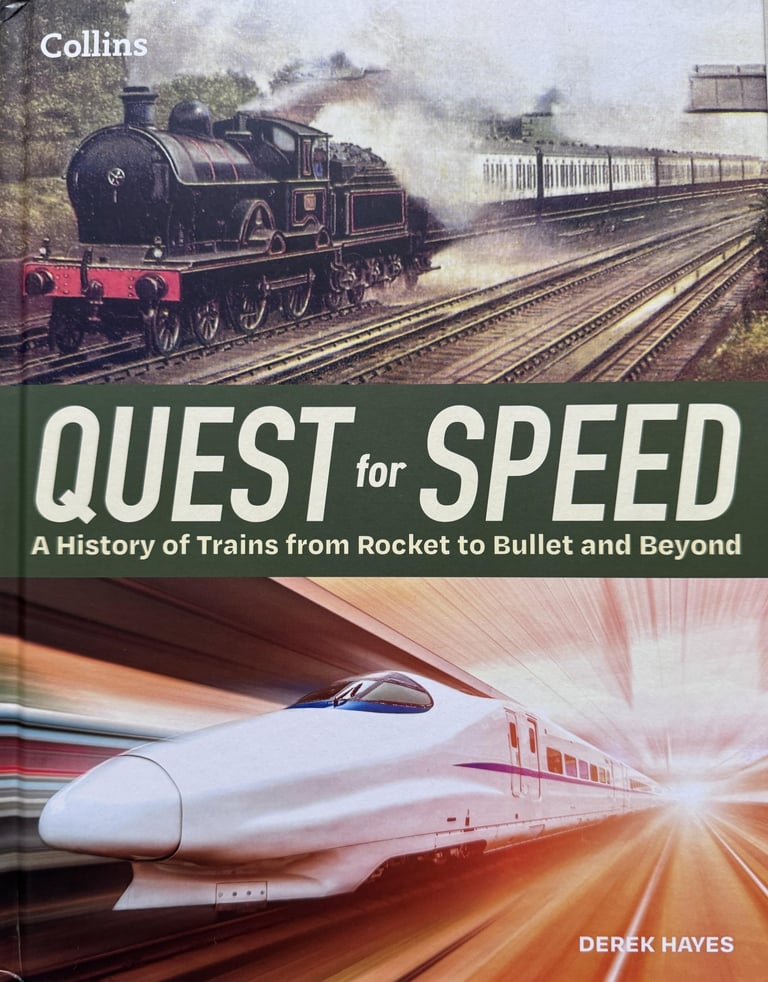Quest for Speed
An Illustrated History of High-Speed Trains from Rocket to Bullet and Beyond
Humans have always wanted to go faster, and since the invention of iron rails this desire has been front and foremost. Technological innovations in both track and train have allowed speeds to increase from that of a horse to those of modern dedicated-track trains capable of speeds that are beginning to rival those of planes, and which are now proliferating in many countries. Derek Hayes’s latest book, Quest for Speed: An Illustrated History of High-Speed Trains from Rocket to Bullet and Beyond, takes us on a journey through time and throughout the world investigating trains that have been considered high-speed in their day. Exquisitely illustrated with hundreds of photos, both archival and modern, the book is a visual feast for anyone even remotely interested in railways.
Focused at first in Britain, the birthplace of the railway, the book covers developments in the nineteenth and twentieth centuries in Europe, including the birth of the French TGV, which is credited with kickstarting the modern rise of the high speed train in the West, though it was itself prodded into being by a desire to keep up with Japanese technology, which had produced the famous Shinkansen—the Bullet Train—in 1964.
Britain took a different tack, however, improving existing lines instead, but in 1970 produced one of the most significant innovations, the Advanced Passenger Train, or APT, which could negotiate existing rail networks faster by virtue of its ability to “lean in” to curves. The technology is still used in Britain, on the West Coast Main Line, but much of it was sold to continental companies which now produce such trains in Italy and Spain. The story is covered in beautifully-illustrated detail in this book. From steam to diesel to gas turbines to electric and from steel wheeled to magnetic levitation (maglev), it is all covered in this book, including significant recent innovations such driverless trains and maglev on conventional track, which may well be the way of the future.
High-speed trains in many countries throughout the world are covered in this book, including China, which has quite recently developed the longest and highest speed system in the world; modern European systems; recent developments in the US, a latecomer by world standards; and even Canadian efforts from the 1970s.
With hundreds of colour photographs, many taken specially for this book, and readable text aimed at all those interested in history and the development of technology—not just railway enthusiasts—Quest for Speed will entertain, fascinate and delight.


